Thoughts on Women and Bouzanquet’s Fascinating Look Book
By Pete Vack
All photos from “Fast Ladies” and thanks to the author
Included in the many joys of studying women in motorsports are the inherent incongruities. There is no better place to witness (dare we say enjoy?) these delightful variations on a theme than in the latest, and probably the best book on the subject so far.
Let’s roll with the title as an example. Fast Ladies, the tacked-on title of Jean Francoise Bouzanquet’s book, “Female Racing Drivers 18881970” is itself indicative of the contradictions. We are not supposed to relate women with sex or use them as sex objects and yet the title, Fast Ladies, though not contradictory in plain language, is implicitly sexist in its duplicity. Add to this the fact there are three books, confusingly with the same or similar title, the other two being “Fast Women” by John Bullock, published in 2002., and “Fast Women, The Legendary Ladies of Racing”, by Todd McCarthy in 2007. Why three books on women in racing must have virtually the same title (to sell, sell, sell is of course the answer) is a good question, but bear in mind that to his credit Bouzanquet’s original French language edition does not have the “Fast Ladies” appellation. Only the English language audience needs such upfront titillation.
But thanks to Bouzanquet’s book, for the first time, we have been provided with ample photographs of women in motorsports–and we revel in it. For despite the cover, which shows pert and pretty Kay Petre being photographed by both film and still camera professionals, we as readers have been left out in the cold. As the photo implies, women sporting motorists have been a favorite of the press and photographer core since day one but very little of it has seeped through to the pages of our traditional, big bore and male dominated motorsport press. (you couldn’t even find a picture of the under 2 liter cars half the time, much less the ladies) A contradiction? Perhaps. Example? In his book “Fast Women”, McCarthy has a welcome and fairly thorough bibliography. He lists 50 articles from newspapers and magazines as references, certainly not a huge compendium but ample and par for the course. However, only five are articles about women from U.S. based automotive magazines and in most cases, photography within the article is limited.
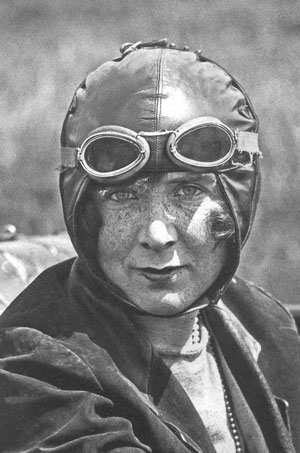
Totally captivating, Mildred Bruce had a very adventurous life. She went to the Arctic circle, flew planes, set records driving Bentleys at Montlhery. She never wore coveralls, and raced in jacket, pleated skirt and pearl necklace..
We are then, starved for photos of the brave and talented women who have colored our sport through the ages. And what they reveal to us (us here being the guys’ side of the isle and this guy’s pew in particular) is manifold and mysterious, awesome and sometimes silly, brave and pioneering, and many with a delightful degree of the contradictions we perhaps only see for ourselves. But you look.
Bouzanquet’s book will sell because of the pictures, and there is nothing wrong with that, although there is much to be said for the text. I would buyit for the pictures and would recommend that you do as well. But behind this unremarkable revelation is the fact that we guys really want to know what these gals (to use a now defunct but once appreciated slang word) look like. Prurient, ain’t it? To be sure, a motorsports photo with women in the picture has more interest to guys than a one without the opposite sex engaged in the landscape. And guys being guys, they tend to look for the girls with the looks. And there again, Bouzanquet delights. To name a few; Madame du Gast cut a fine figure; Mildred Bruce would put a freckle faced Doris Day to shame; Kay Petre could have been a movie star; Amy Johnson was a rallyist, a pilot and a knockout; Gilberte Thirion was more beautiful than the Ferraris she raced; while F1 drivers Divina Galica and Giovanna Amati could easily displace the attractive and contemporary Danica Patrick.
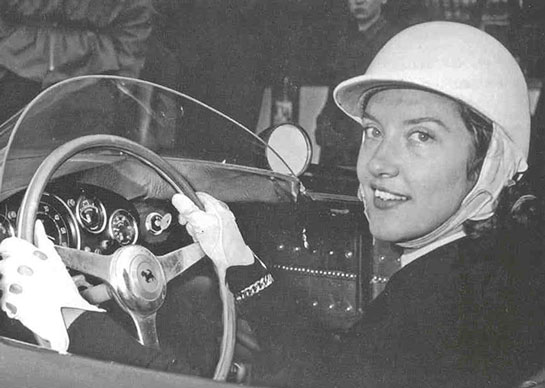
Giberte Thirion in the Ferrari she shared with Anna Peduzzi in 1956. Thirion raced at Spa, Rheims, Sebring and the Paris 24 hours.
Although Danica is too contemporary for Bouzanquet’s book, her backstory is relevant here. The contradiction of marketing of Danica Patrick on one hand as tough and ready to take on the men, while at the same time being sold as a sex symbol on TV ads is interesting. That she has the ability to be both is as remarkable as the fact that women can indeed be both at the same time, creating a wonderful variety of often visual inconsistencies. Indeed, compared to women drivers, male racing drivers as a group can be incredibly boring, one sided and single minded.
For the poor harried guy, there are questions and protocols and roadside bombs galore in regards to both the past and present. Are we supposed to avert our eyes at the sexy Patrick (as we no doubt do when we see that absurd but in-your-face male pit crew in high heels and bikinis) and think of her only in terms of her superb abilities on the track, safely hidden behind the Nomex and full everything helmets? Or can we—should we– do both?
Ah, but the none of that augurs up to the fact that the most contradictory element is not the women themselves but the event organizers, rule makers and governing bodies, France being just as culpable than the AAA, Indy or Brooklands. For years, at America’s premier event, women weren’t even allowed in the pits much less the cockpit. For the most part, women at Brooklands were welcome but urged to compete in their own events. France allowed women to compete at Le Mans but according to Bouzanquet, at LeMans, after being allowed to run at Le Mans up to 1951, “had to wait for the Women’s Lib of the 1970s” to fully participate in the event again.
But French women have the last say, for France was also the home of the single most successful woman driver in history: Michele Mouton who placed second in the World Rally Driver’s Championship in 1982, after being crowned the French and European female rally champion a total of 11 times.
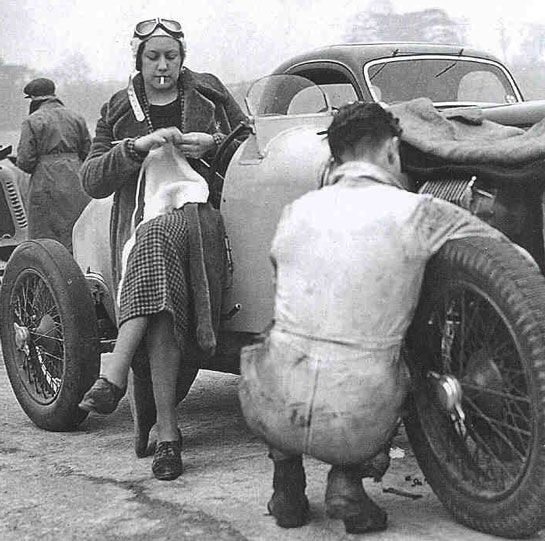
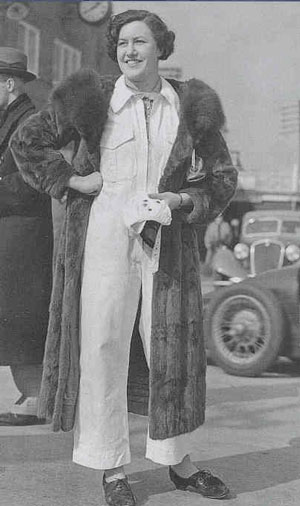
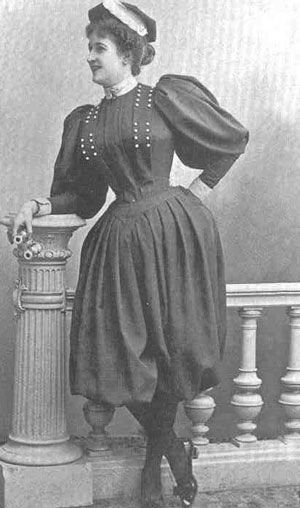
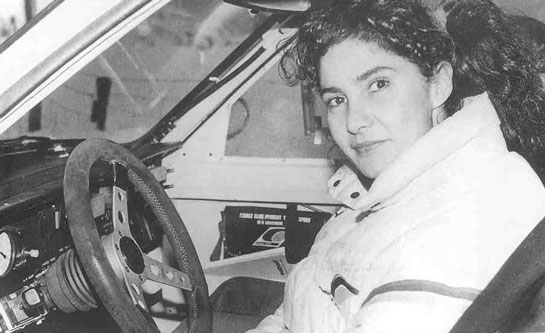
how about a mention of evelyn mull
or denise mccluggage
or janet guthrie
or donna mae mims
all of whom i have raced against @ one time or another.
> jack
Lest we not become too dazzled by the French ladies, I remember a terrific lady Ferrari driver of the 1950’s Cal Club races here in the U.S. on the west coast named Mary McGee.
I might have tried this at one time. I’m not a good passenger but I sure like going fast by myself!
I may be ordering this book soon.
Linda Weldon Feldhorn
The car culture has for too long underrepresented women in the sport to the point that most women I know say “Cars and racing? Ugh – how boring!” or, “Are you going to go wax your car again? Why?” We have inadvertently cut them out of this world. These photos underline that the car culture is not about the cars in isolation, it’s about the people and the cars they drove. All the colorful historical photos that are cherished show the people that drove these famous marques in their element. We need more women in those photos. Hats off to this book!
And what about Hellé Nice? She is in my opinion the greatest of all fast ladies in car racing history. I hope the book includes some pictures of her driving Bugattis or Alfa Romeo.
Thanks for the comment!
Yes, indeed Bouzanquet covers the great lady with many images, most not seen
in the book “Bugatti Queen” or elsewhere.
However, we have given ample coverage to the Bugatti Queen so wanted to
concentrate on the lesser known women. But I daresay we’ll have more on other women race and rally drivers in the near future.
Editor
I love that photo of Mrs Marjorie Eccles: Fag (ie, cigarette) in mouth, catching up on a bit of knitting before the race. Marvellous!!!!!! 🙂